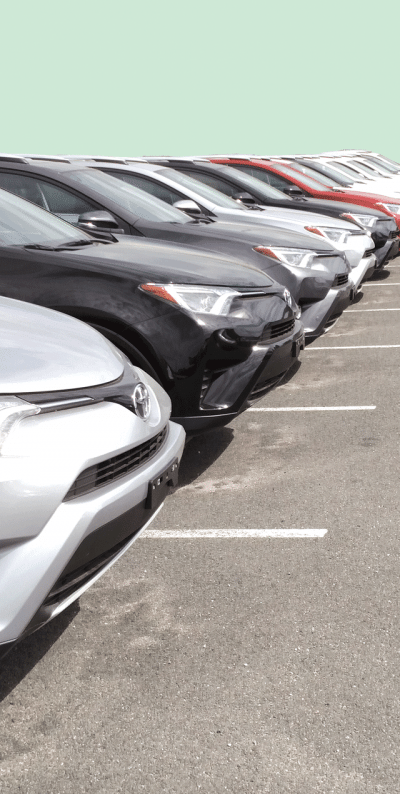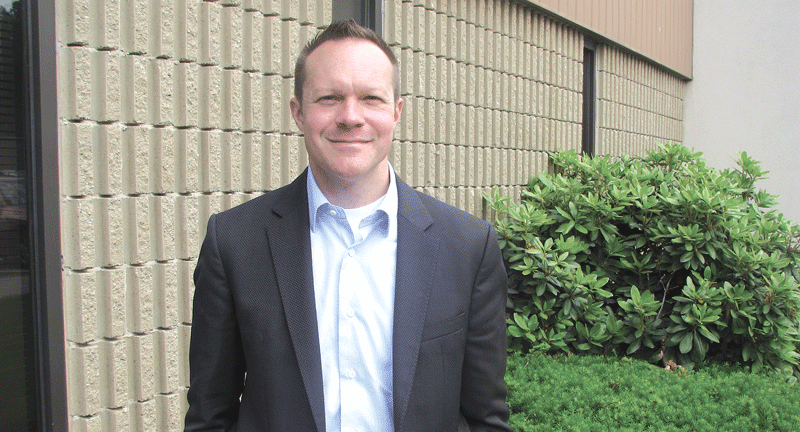
At Area Dealerships, Crossover Sales Continue to Soar
More for the Money
 Sport utility vehicles have long staked out significant market share in the auto-sales world, as Americans appreciate their roominess and flexibility. But their price tag has been a little high for sedan owners who might otherwise consider a larger vehicle. Enter crossovers, or compact utility vehicles, which are small SUVs that handle like cars — and typically boast a price point in the sedan range. For these reasons and others, they’ve soared in popularity in recent years, and are a main reason why SUVs now outsell sedans in the U.S.
Sport utility vehicles have long staked out significant market share in the auto-sales world, as Americans appreciate their roominess and flexibility. But their price tag has been a little high for sedan owners who might otherwise consider a larger vehicle. Enter crossovers, or compact utility vehicles, which are small SUVs that handle like cars — and typically boast a price point in the sedan range. For these reasons and others, they’ve soared in popularity in recent years, and are a main reason why SUVs now outsell sedans in the U.S.
A look at any parking lot might suggest America is the land of SUVs, but the past two years have seen hard statistics back up that perception.
Indeed, as recently as 2013, sedans accounted for half of all new-vehicle sales in the U.S. Last year, they accounted for just over 40%.
Ken Cernak, president of Cernak Buick in Easthampton, has seen the trend play out locally. “This is the second year SUV penetration been greater than sedans — last year and this year,” he told BusinessWest. “Before that, it was equal, but the last two years, it has changed, and people are buying more SUVs than passenger cars.”
At the heart of this trend is the continued dominance of perhaps the past decade’s most significant auto-sales trend: CUVs, or compact utility vehicles, also known as crossovers.
It’s easy to see why. While traditional, large SUVs are built on a truck platform, CUVs are built on a car platform and handle more like a car. But they offer much of the roominess of SUVs at often lower gas mileage and a sticker price more in line with midsize sedans.
“It’s not that people don’t still like to buy cars,” Cernak said, “but more people coming into the market are looking for SUVs of all kinds, both new and used.” And CUVs — Buick’s version is called the Encore — are driving the shift.
Though SUVs have long been popular with American motorists, the capability, passenger room, and storage space of most sedans is adequate for the needs of most families; to those who didn’t need the extra space (for camping and other hobbies, or toting multiple pets around, for example), SUVs were a luxury the price difference didn’t justify.
But CUVs, which compete with sedans at a very similar price point, are making converts. It partly explans why even hugely popular car models like the Toyota Camry and Prius fell last year to sales lows not seen since 2011, while the BMW 5 Series and Ford Focus and Fusion saw drops of up to 20%, according to Carbuzz.
“This isn’t a bad thing for automakers because crossover and SUV sales remain strong enough to keep the trend of total vehicle sales going up,” the publication notes. “Companies that have strong SUV lineups are seeing the greatest benefits from this shift in power.”
Like Balise Auto Group, which specializes in close to a dozen nameplates. Bill Peffer, the company’s president and chief operating officer, said CUVs are just one more step in America’s ever-evolving shift in driving tastes.
“If you go back through the decades, it was the sedan in the ’60s, the station wagon in the ’70s, minivans in the ’80s, sport-utility vehicles in the ’90s and 2000s,” he said. “But the traditional SUV, which was on a truck platform, has moved to a car platform and created a new segment of CUVs, or crossovers, if you will. CUVs offer the utility and some of the capacity of a truck, but still retain the comfort and drive and fuel economy of a car. It’s the best of both worlds.”
He said the crossover — popular models include the Toyota RAV4, the Honda CR-V, the Ford Edge, the Mazda CX5, and the Nissan Rogue — appeals to any number of groups, from empty nesters to newlyweds looking for weekend adventure; from hobbyists to growing families.
“They’re a lot more comfortable overall, and the footprint is a lot smaller than the Expedition, Tahoe, or Explorer,” said Peffer. “And with so many choices in the $25,000 to $35,000 range, many with four-wheel drive or all-wheel drive, it’s a pretty compelling proposition. If you have any type of utility needs or a big family, it’s hard not to go the way of the CUV, and manufacturers are picking up on that; their products are reflecting more and more of that.”
Price and Performance
Michael Oleksak, general manager at Burke Chevrolet in Northampton, has done well in recent years with Chevrolet’s crossover, the Equinox, which offers front-wheel drive or all-wheel drive, depending on the buyer’s preference.
“They’re very popular,” he said. “There’s the price-point part of it, but another part is the way the vehicles are built. You’re not getting up into it, and you’re not getting down into it; it’s almost level. So, if you’re an average-height person, they’re very easy to get in and out of.”

Bill Peffer says manufacturers have picked up on the growing popularity of crossovers and are busy introducing more to the market.
The utility aspects aren’t dissimilar from a larger SUV, he added. “The back is very functional because the rear seat actually moves forward and back just like the front seats, so you can get a little extra cargo room. Or, if you have a larger person sitting in the back, they have the extra room.”
In addition, Oleksak said, the low base price of most CUVs gives buyers an opportunity to add amenities, from leather seats to a moonroof, and remain below a large SUV’s price tag. “You can get something very well-equipped, very top of the line, or something very basic, or in between. The way it’s built, it’s very versatile with regard to budget.”
Cernak agreed that crossovers are easier than SUVs to enter and exit, which is especially helpful for elderly people. “It’s easier to step up and step down; in a car you drag yourself up and out. So the Encore is very popular with both young and elderly women; their size isn’t too small and isn’t too big. It’s easy to park and drives and handles well. Also, a lot of our women customers like the idea of sitting up a little higher, for better vision.”

Ken Cernak says his dealership, reflecting a national trend, now sells more SUVs than cars, and crossovers are driving the shift.
On an aesthetic level, the appeal of CUVs has become so well-understood that they adhere to a certain formula, Gregory Lang, corporate strategic planning manager for Toyota in California, told the Atlantic last year. “Frankly, if you lined up a Ford Escape, a Honda CRV, and a Toyota RAV4, and you were looking at them 50 yards away and you were an average customer, I don’t think you could tell the difference. Somebody in the industry could, but the crossovers have collapsed on a certain formula that seems to be very in vogue — some sleekness but a strong dose of utility.”
They also tend to be quieter inside than most cars, Cernak noted, which is another selling point.
However, their main appeal remains their sheer utility, Peffer said. “You can load furniture, load people, whatever your heart desires. Americans are fairly nomadic, and they’re also adventuresome, and SUVs fit that lifestyle. And because we have different sizes [with CUVs], the affordability aspect brings access to more people.”
Fueling Sales
Another element in the surging popularity of crossovers — especially for buyers who would traditionally purchase a sedan — is the currently low gas prices.
“They do make a difference,” Oleksak said, noting that the Traverse, Chevrolet’s next size up — larger than the Equinox but smaller than bigger SUVs — is also reaping the benefits of savings at the pump, and is a solid choice for, say, larger families who want a third seat.
Peffer agreed that the fuel-cost situation has been good for sales of larger vehicles, from crossovers to larger SUVs to trucks, which are selling well.
Whatever the reasons, automakers have begun to adjust to a landscape where sedans are currently being pushed to the side by SUVs and crossovers. For example, this past January and February, The Truth About Cars reported that a dozen premium brands produced 150,000 SUV and crossover sales, up 17% from the same period one year ago. Even luxury names reflected the shift; in February, Lexus was down 1,883 new-car sales from a year earlier but added 1,978 SUV and CUV sales.
Meanwhile, Automotive News reported that Hyundai’s new-car sales slipped 5.8% just last month, while its crossover sales nearly doubled.
Cernak isn’t surprised by such trends. “It’s been going in that direction for a long time,” he said, noting that Buick will soon unveil the Envision, which, like Chevy’s Traverse, bridges the size gap between the Encore and the brand’s large SUV, the Enclave. In other words, more choices for a buying public that’s increasingly ditching sedans.
As for crossovers, “when we get them, we sell them,” Peffer said. “That’s pretty much across all brands, from Lexus to Kia and everything in between. That’s where all the news is. That’s what’s selling.”
Joseph Bednar can be reached at [email protected]




